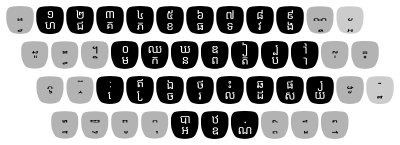But Think of the (World Wide) Users!

History is full of stories about technology that makes sense to the designer but doesn’t really fit the needs of the users. Take cake mixes. In 1929, a man named Duff realized that he could capitalize on surplus flour and molasses and created a cake mix. You simply added water to the dry mix and baked it to create a delicious cake. After World War II General Mills and Pillsbury also wanted to sell more flour so they started making cakes. But sales leveled out. A psychologist who was a pioneer in focus groups named Dichter had the answer: bakers didn’t feel like they were contributing to the creation of the cake. To get more emotional investment, the cake mixes would need to have real eggs added in. Actually, Duff had noticed the same thing in his 1933 patent.
It is easy to imagine a bunch of food… scientists? Engineers? Designers?… whatever a person inventing flour mixes in the 1930s was called… sitting around thinking that making a mix that only requires water is a great thing. But the bakers didn’t like it. How often do we fail to account for users?
From Cake Mix to Tech
Apple has made a business of this. Most of us don’t mind things like arcane commands and control key combinations, but the wider pool of global computer users don’t like those things. As the world continues to virtually shrink, we often find our users are people from different lands and cultures who speak different languages. It is, after all, the world wide web. This requires us to think even harder about our users and their particular likes, dislikes, and customs.
Even different regions can have different customs and language issues. For example, Braniff Airline’s slogan “fly in leather” was translated into Spanish correctly, but in Mexico, slang usage made it “fly naked.” A Swedish vacuum maker abandoned the English slogan “Nothing sucks like an Electrolux” in the United States for similar reasons.
Facebook and Cambodia

The recent leaks from Facebook had a technically interesting quirk to them. According to news reports, Facebook memos showed that company executives were surprised that about half of the voice traffic on Facebook’s Messenger product came from Cambodia. There was speculation that maybe the country had a high illiteracy rate. According to UNESCO, the adult literacy rate is over 80% and rising. Among younger people, it is well over 90%. You may think that’s bad, but it is roughly the same rate as the United States. In fact, Cambodia is slightly higher since the US has about 21% adult illiteracy. Although, in all fairness, UNESCO does mention that different countries define literacy in different ways, it seems unlikely that Cambodia has enough illiterate phone and computer users to account for half of Facebook’s voice traffic.
What was the problem? The Khmer language has more characters than any other world language making computer keyboards notoriously annoying. There are 74 characters, so most keys have two different functions and most phones do not have Khmer-enabled keyboards installed by default. Some users don’t even know they could type Khmer on a phone keyboard. Reportedly, young people transliterate Khmer into Latin characters or omit characters, relying on the recipient to fill in the blanks. There’s a good article about this on the website Rest Of World.
But Do We Care?
There was a time when the chances of your work winding up halfway around the globe were immeasurably slim. Sure, if you happened to work for a giant multinational company it might happen, but otherwise your designs were unlikely to be international travelers. Today even the smallest companies can export worldwide.
You might think that you don’t do anything commercial so you really don’t care. But if you post your work on Hackaday.io, GitHub, YouTube, or anywhere on the Internet, you are exporting in ways that would have made the biggest global companies in the world jealous just a few decades ago. That 20 line script to control your mood lighting based on the current song playing might get picked up in China, Australia, France, and Ethiopia. Who knows?
This sort of problem isn’t limited to Cambodia, either. Many Asian languages are troublesome for keyboards and Kanji — the pictographic language — is especially hard since it can combine several thousand elements. Look at this picture of a Chinese typewriter, if you don’t believe me.

from Blog – Hackaday https://ift.tt/3liQCbi
Comments
Post a Comment